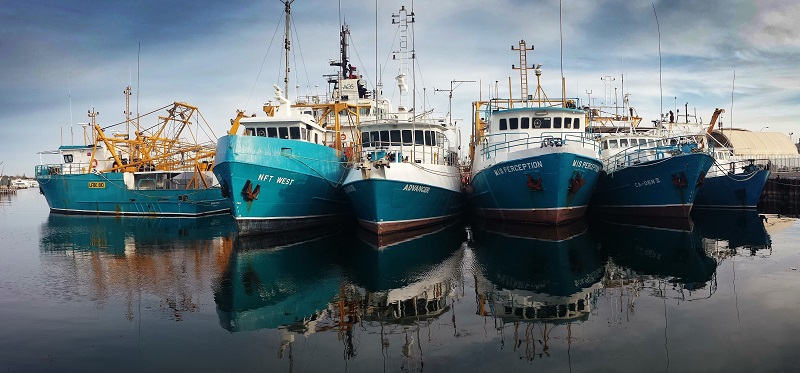Fighting Illegal Fishing: We Need to Focus on the Unregulated
- 12 June 2020
- Category: News

Illegal, unreported and unregulated fishing all seriously impact the sustainable management of fishing.
We are all increasingly aware of the perilous state of our oceans and seas, of growing pollution, of huge volumes of plastic waste and over-fishing.
The importance of harvesting fish stocks at sustainable levels is easily understood when we know that the world’s reported total fish catches have been stable since the late 1980s, yet the global population is expected to reach 10 billion in 2050. Fighting against illegal, unreported, and unregulated (IUU) fishing is an absolute priority.
Unreported fishing
The UN biodiversity report published in May this year stated that by 2015, 33 percent of marine fish stocks were being harvested at unsustainable levels; 60 percent were maximally sustainably fished, and only 7 percent were harvested at levels lower than what can be sustainably fished.
The same report estimates that as of 2011, 33 percent of the world’s reported fish catch is now illegal, unreported or unregulated.
In this context, IUU fishing is serious challenge for coastal states around the planet and especially for developing countries – which are struggling to obtain enough resources for effective monitoring, control and surveillance.
While much of the IUU fishing focus to date has been on illegal fishing, concentrating resources on the ‘unreported element’ will deliver significant results too.
Unreported fishing could be the result of a simple technical error on the vessel. It could be an oversight of the captain, already responsible for so much in addition to logging the catch, or it could be in some specific cases a planned strategy, where one catch is reported but not another, to minimise the tax paid or to avoid fishing restrictions.
Distorted market
Whatever the reason, an unreported catch distorts the real picture and clouds understanding of the actual situation, which is vital to set up a sustainable fisheries management plan.
It also creates distorted market conditions for the fishermen who are operating in full compliance with the regulatory requirements. The unreported catch is likely to be sold alongside the legitimate catch, depressing the market and reducing prices.
But the biggest problem, and the least discussed, is unregulated fishing. This describes a country or an area that has no fisheries regulations in place, where fishing can take place at anytime, anywhere, by any means, and with no limit to the amount of fish they can catch.
The only way to address this issue is through close cooperation, education and awareness raising, technical support to governments such as fisheries management advising, and in some cases financial support.
Political pressure is important as well, but should not take precedence given the fact that convincing people to change always brings better results than imposing change.
Technological breakthroughs
Firstly, despite the challenges, technological breakthroughs over the last ten to twenty years now make it entirely possible to monitor the world’s fishing activities wherever they are. Ten to fifteen years ago, vessel monitoring systems (VMS) were not widely accessible and were prohibitively expensive. Communications between the shore and sea have improved dramatically, and government investment is much more likely to support better connectivity. Technology can now tell where a vessel is, what it’s doing, and e-reporting can log a catch in real time.
Past reporting was paper-based and then collated by the authorities with the resulting analysis available several months down the line. E-reporting (where used) is instant, enabling regulatory authorities to be much more reactive and responsive to the status of specific fish stocks, imposing or lifting restrictions in a matter of hours.
This has been demonstrated in the case of Blue Fin tuna in the Mediterranean sea, where detailed monitoring and analysis of a fish population in crisis, followed by careful management across the industry, led to recovery and growth in numbers. As a result, in some places populations have been restored to their levels of ten to fifteen years ago.
Cultural shift
Secondly, there has been a significant cultural shift. Customers are questioning and demanding supply chain transparency in ways they never have before. While the general public may not be aware of the principles behind sustainable fisheries management, almost anyone in the developed world can tell you that the oceans are environmentally threatened and greater scrutiny along every part of the supply chain is required as a result.
Thanks to this growing awareness, fishermen, companies, and political bodies can create innovative programs to reduce the scourge of IUU fishing.
The European Union is the top market for fish exports in the world. This gives Europe immense leverage over countries in and not in, the EU. Under the European Commission’s carding process, a country with inadequate measures in place to prevent IUU fishing can be issued with a formal warming – a yellow card, to improve. If they don’t improve then their fish may be banned from the EU market – a red card. The system was introduced in 2010 and is clearly delivering results among those countries who want to reach the lucrative European market.
Sustainable management
Illegal, unreported and unregulated fishing all seriously impact the sustainable management of fishing. If the UN is to achieve its sustainable development goal, number 14: to conserve and sustainably use the oceans, seas and marine resources for sustainable development, then we need to extend fisheries regulations to the countries that are unregulated today. Then we can apply advanced technology to monitor sustainable fisheries management – a vital step to reaching this end.
This article originally appeared in The Ecologist.
